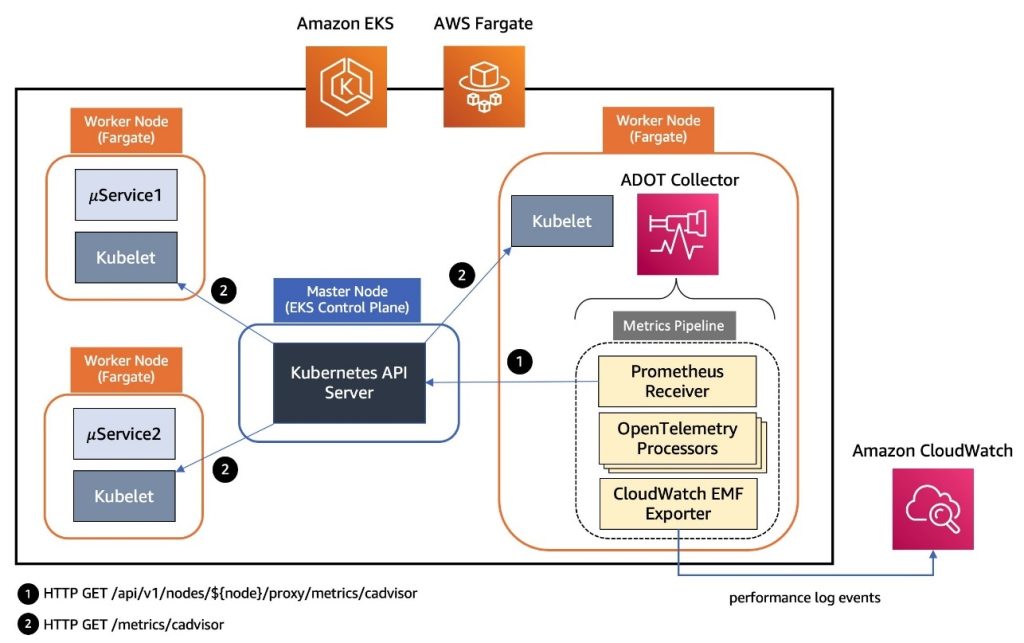AWS Architecture Blog
How HashiCorp made cross-Region switchover seamless with Amazon Application Recovery Controller
In this post, we discuss HashiCorp’s journey from manual, stress-inducing failover procedures to a streamlined, confident approach that fundamentally changed how they deliver on their enterprise-grade resilience promises.
Implement monitoring for Amazon EKS with managed services
In this post, we show you how to implement comprehensive monitoring for Amazon Elastic Kubernetes Service (Amazon EKS) workloads using AWS managed services. This solution demonstrates building an EKS platform that combines flexible compute options with enterprise-grade observability using AWS native services and OpenTelemetry.
How Scale to Win uses AWS WAF to block DDoS events
In this post, you’ll learn how Scale to Win configured their network topology and AWS WAF to protect against DDoS events that reached peaks of over 2 million requests per second during the 2024 US presidential election campaign season. The post details how they implemented comprehensive DDoS protection by segmenting human and machine traffic, using tiered rate limits with CAPTCHA, and preventing CAPTCHA token reuse through AWS WAF Bot Control.
Migrate and modernize VMware workloads with AWS Transform for VMware
AWS Transform for VMware is a service that tackles cloud migration challenges by significantly reducing manual effort and accelerating the migration of critical VMware workloads to AWS Cloud. In this post, we highlight its comprehensive capabilities, including streamlined discovery and assessment, intelligent network conversion, enhanced security and compliance, and orchestrated migration execution.
Simplifying sustainability reporting using AWS and generative AI in banking
In this post, you learn how you can use generative AI services on Amazon Web Services (AWS) to automate your sustainability reporting requirements, reduce manual effort, and improve accuracy. You do this by implementing an automated solution for extracting, processing, and validating data from corporate reports.
Amazon Bedrock baseline architecture in an AWS landing zone
In this post, we explore the Amazon Bedrock baseline architecture and how you can secure and control network access to your various Amazon Bedrock capabilities within AWS network services and tools. We discuss key design considerations, such as using Amazon VPC Lattice auth policies, Amazon Virtual Private Cloud (Amazon VPC) endpoints, and AWS Identity and Access Management (IAM) to restrict and monitor access to your Amazon Bedrock capabilities.
Build a multi-Region AWS PrivateLink backed service with seamless failover
This post demonstrates how the Issuer Solutions business of Global Payments, as a service provider, implemented cross-Region failover for an AWS PrivateLink backed service exposed to their customers. Their solution enables failover to a secondary Region without customer coordination, reducing Recovery Time Objective (RTO).
How Stellantis streamlines floating license management with serverless orchestration on AWS
In this post, we explore a unique scenario where an ISV, unable to provide a floating license option for cloud usage, worked with Stellantis to develop an alternative solution. This approach, implemented with the ISV’s permission, treats named user licenses as if they were floating, automatically assigning and removing them based on the state of user workbench instances.
Analyze media content using AWS AI services
Organizations managing large audio and video archives face significant challenges in extracting value from their media content. Consider a radio network with thousands of broadcast hours across multiple stations and the challenges they face to efficiently verify ad placements, identify interview segments, and analyze programming patterns. In this post, we demonstrate how you can automatically transform unstructured media files into searchable, analyzable content.
How Launchpad from Pega enables secure SaaS extensibility with AWS Lambda
In this post, we share how Pegasystems (Pega) built Launchpad, its new SaaS development platform, to solve a core challenge in multi-tenant environments: enabling secure customer customization. By running tenant code in isolated environments with AWS Lambda, Launchpad offers its customers a secure, scalable foundation, eliminating the need for bespoke code customizations.









